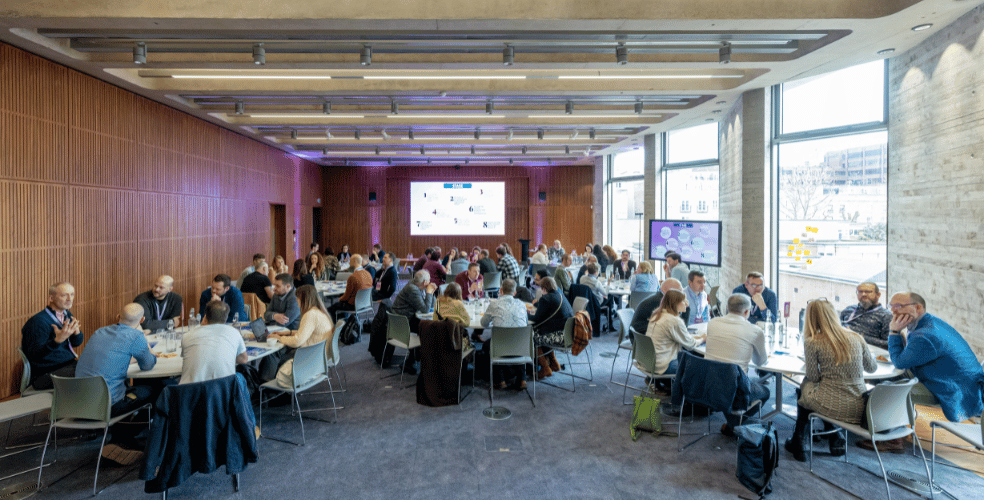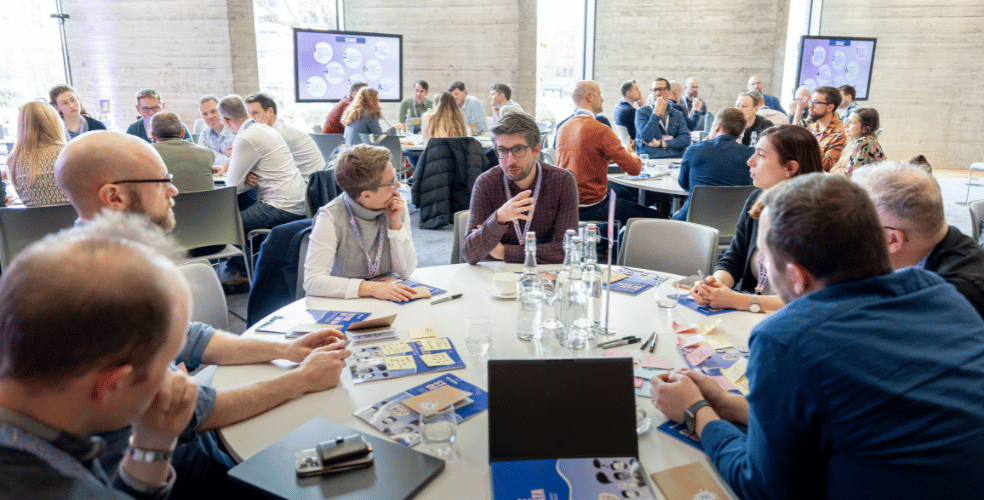Government services impact millions of lives every day. Whether it’s applying for legal aid, registering a birth, or accessing mental health support, people need services that are easy to use and designed around their needs. Yet too often, these tools are built in isolation, leading to duplication, inefficiencies, and frustrating user experiences.
At our Services Week breakfast event, co-hosted by the Ministry of Justice (MoJ) and TPXimpact, we brought together experts to address this challenge. These included Nikola Goger, Head of Design at the MoJ; Amy Ricketts, Head of Service Design at Barnardo’s; Kirsty Sinclair, Service Design Lead at the Scottish Government; and Martin Ford-Downes, Lead Service Designer for Prisons Digital at the MoJ.
Together, we explored how service patterns offer a solution. By identifying repeatable blueprints across departments and sectors, we can build services faster, reduce duplication, and improve outcomes for citizens. But making service patterns a reality requires more than good intentions—it demands collaboration, cultural change, and a commitment to breaking down long-standing barriers.
The power of patterns
Service patterns aren’t new, but the renewed focus on them signals a growing recognition of their value. We heard how the MoJ has been exploring how patterns can help teams stop reinventing the wheel and instead reuse established solutions. The vision here is for a ‘Lego box’ of components, where around 60% of a service can be assembled from existing pieces, freeing teams to focus on the elements that truly need bespoke design.
Across other organisations and government, similar thinking is emerging. Barnardo’s is developing service models that create a consistent approach to delivering family and children’s services, while the Scottish Government is looking at patterns across everything from licensing to environmental policies.
Overcoming barriers to adoption
While the benefits of service patterns are compelling, we also heard how implementing them at scale is easier said than done. A key issue raised was the risk of services becoming rigid or one-size-fits-all. At Barnardo’s, for example, while common service models provide a template, Amy explained how flexibility is needed to tailor them to specific community needs.
Another challenge is organisational buy-in. Changing how services are built requires engagement from policy teams, digital leaders, and frontline staff. This is where cross-sector collaboration becomes crucial. By working together, different organisations can validate common patterns, share best practices, and ensure the work benefits the wider public sector rather than just individual teams.
We heard how we’re already seeing the power of collaboration around patterns. A cross-departmental group—including MoJ, Defra, DWP, and the Home Office—is developing a prototype for a shared service pattern, addressing common user needs like applications, case management, and service requests. The more this type of work happens together, the greater the potential impact that service patterns can have.
What needs to happen next?
Service patterns can’t just be an abstract idea; an important part of the discussion was that they need to be embedded into how organisations build and deliver services. To make this happen, we need:
-
Clear ownership and governance – Service patterns need champions at both departmental and cross-government levels, ensuring they are maintained, evolved, and widely adopted.
-
Practical testing and measurement – Patterns must be tested in real services, with data-driven evidence showing how they improve efficiency and user outcomes.
-
Stronger cross-government coordination – Instead of individual teams working in isolation, we need structured mechanisms for sharing knowledge, from design systems to common tech platforms.
-
Cultural and structural change – To truly embed service patterns, organisations need to prioritise reusability and consistency, making it easier for teams to adopt common approaches rather than starting from scratch.
Collaboration is key
The key takeaway from this fantastic event and conversation was that the more we collaborate, the better the services we can create. Whether it’s through co-designing cross-government patterns or simply documenting and sharing what works, small steps can lead to significant change.
As we look ahead, the challenge is not just to build better services, but to build them in a way that scales, evolves, and truly meets user needs. Service patterns give us the blueprint, we just need to commit to making them work.
Thank you to everyone who attended and to our amazing speakers. You can catch up on the conversation by watching the event on our YouTube channel.

Transforming data, trust and public services
At Power of Data, we brought together digital leaders to explore transparency, AI, public involvement, and mapping to harness data’s potential for everyone.
Read more
Designing cross-cutting public services
How we can join up systems, data, and policy to create connected public services that work for everyone.
Read moreOur recent insights
Transformation is for everyone. We love sharing our thoughts, approaches, learning and research all gained from the work we do.
-

Connecting government services for greater impact
Read insight -

Designing cross-cutting public services
Read insight -

Shaping the future of data in government
Read insight -

Transforming data, trust and public services
Read insight


